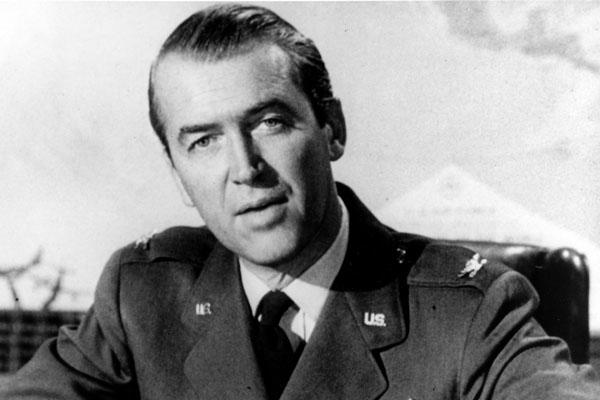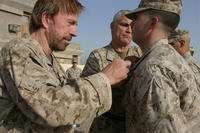It might be surprising to many that a famous actor like James Stewart had a different vision for his life than being a silver-screen star. He wanted to attend the U.S. Naval Academy and become a naval aviator. His Navy career wasn't to be, but Stewart would get another shot at military service -- in the Army Air Force.
Stewart came from a long line of military service. Both grandfathers fought in the Civil War, and his father was a veteran of the Spanish-American War and World War I. Then a hardware store owner, he instead convinced his son to attend Princeton, which is still a pretty good school, all things considered.
It was there that Stewart became involved with acting and pursued it as a career.
After struggling to be a star on the stage, he moved to Hollywood and started acting for the screen. As he made movies, he also logged 400 flight hours over eight years in show business. He also made some of his most famous movies in the years before World War II, including "You Can't Take It with You," "Mr. Smith Goes to Washington" and "The Philadelphia Story."
Despite having a degree from Princeton and hundreds of hours behind the stick of an aircraft, Stewart was so ready to serve in World War II, he enlisted as a private before the United States entered the war.
He was rejected by the Army at first for being underweight, but with the help of a Hollywood friend, he was able to literally tip the scales in his favor, entering the Army in 1940.
Stewart was the first Hollywood actor to join. It was the start of a 27-year career in the Army and then the Air Force. When a producer asked him why he would give up his screen career for the military, he said: "This country's conscience is bigger than all the studios in Hollywood put together, and the time will come when we'll have to fight."
At first, Stewart was relegated to doing newsreels and public relations stunts in the Motion Picture Division, but at 33, he was too old for aviation cadet training. He applied for an Air Corps commission based on his education and flight experience and was promoted to 2nd lieutenant in 1942. Still, he demanded to fight in the war.
After a year training new pilots in New Mexico, he finally was sent overseas to fly B-24 Liberator bombers over Nazi-occupied Europe. At a time when air crews were expected to be killed between eight and 12 missions, Stewart had flown 20. He was stationed in Europe through the end of the war, receiving two Distinguished Flying Crosses, four Air Medals, a Presidential Unit Citation and the French Croix de Guerre.
Although World War II might have ended, Stewart stayed in the Army, and later the Air Force when it became an independent branch in 1947. He continued his service in the Air Force Reserve, flying missions in B-52 bombers.
Stewart even flew as an observer on a bombing mission during the Vietnam War. He retired as a brigadier general from the Air Force in 1968.
In 1946, Stewart almost went home to take over the hardware store, but instead gave Hollywood another shot. The only problem was that years at war had taken their toll on his appearance. He was 37 but looked 50 and his career as a romantic lead was over, according to one biographer.
Then Frank Capra cast the actor in "It's a Wonderful Life." This led to a revival of his career in Hollywood, and he went on to perform some of his most well-known roles, including as Scottie Ferguson in "Vertigo," Charles Lindbergh in "The Spirit of St. Louis" and Elwood P. Dowd in "Harvey."
Stewart was still wracked with guilt about the lives he lost on bombing missions under his command and channeled his post-traumatic stress symptoms into his performances. He never spoke about his wartime experiences.
In December 1996, Stewart declined to have the battery in his pacemaker changed and died six months later of a pulmonary embolism at age 89.
-- Blake Stilwell can be reached at blake.stilwell@military.com. He can also be found on Twitter @blakestilwell or on Facebook.
Want to Know More About Veteran Jobs?
Be sure to get the latest news about post-military careers as well as critical info about veteran jobs and all the benefits of service. Subscribe to Military.com and receive customized updates delivered straight to your inbox.


















